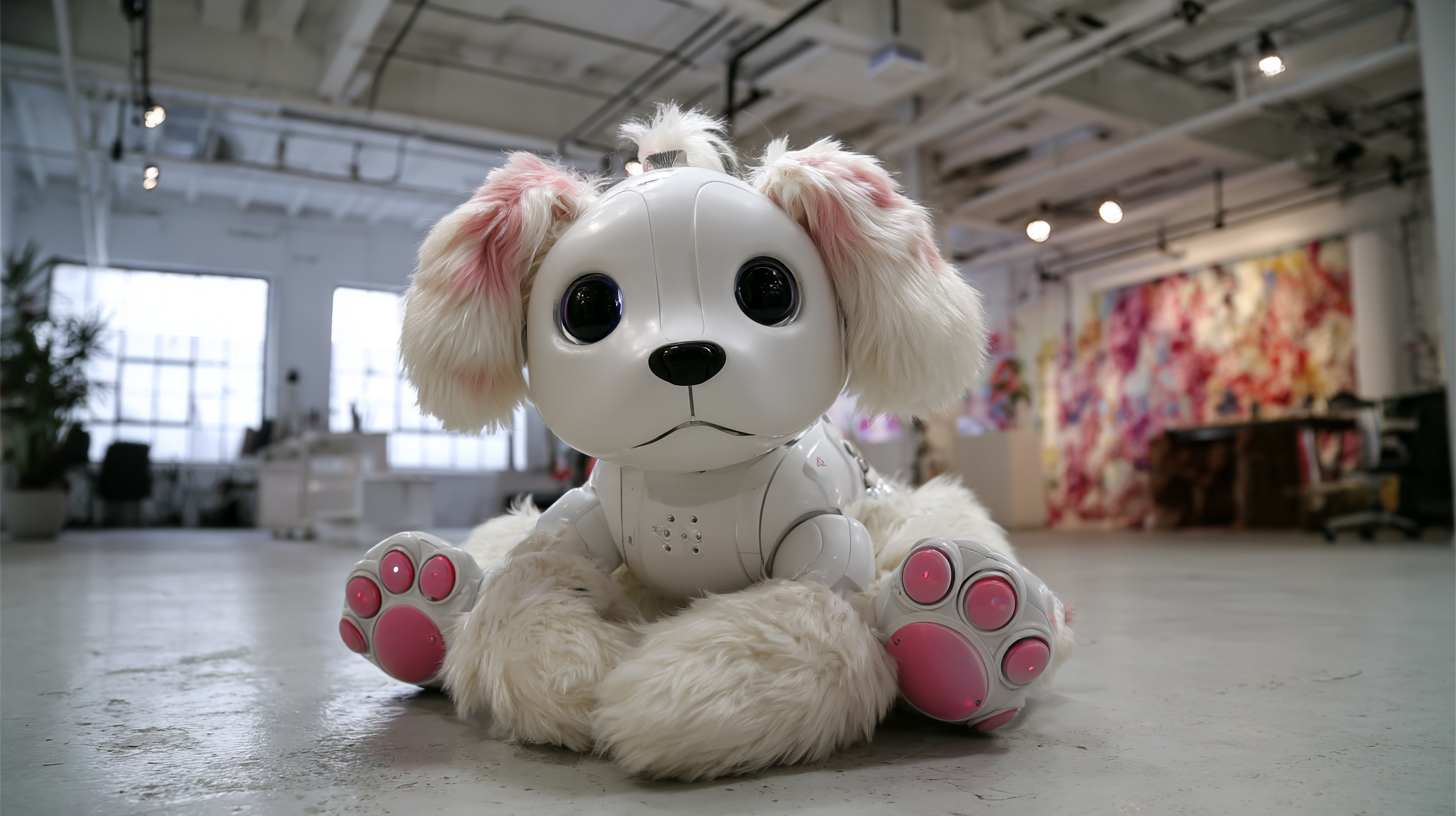In recent years, the burgeoning popularity of the fluffy robot dog has transformed the pet care industry, blending cutting-edge technology with companionship. According to a 2022 market research report by Grand View Research, the global market for robotic pets is expected to reach USD 100 billion by 2030, with a compound annual growth rate (CAGR) of 25.4% from 2023 to 2030. As more consumers invest in these lifelike companions, understanding the intricacies of after-sales service and repair costs becomes essential. By maximizing your investment in a fluffy robot dog, you not only enhance your ownership experience but also ensure that your robotic pet remains functional and enjoyable for years to come. This blog will explore seven essential repair cost tips and the myriad benefits of after-sales service, empowering you to make the most of your investment in this exciting new realm of technology.

In the rapidly evolving robotics industry, the significance of after-sales service cannot be overstated, especially for pet products like fluffy robot dogs. These innovative companions not only provide joy and companionship but also require ongoing maintenance and support to ensure they function optimally. A reliable after-sales service can be the difference between a delightful experience and a frustrating one. Customers should be aware of the service options available, such as warranty coverage, repair services, and customer support channels. Understanding these aspects enables pet owners to make informed decisions and helps them enjoy their investments in robotic pets without anxiety.
Furthermore, companies that prioritize after-sales service often cultivate loyal customer relationships, enhancing brand reputation and driving repeat business. By addressing customers' concerns promptly and efficiently, manufacturers can foster trust and satisfaction. In the context of investing in a fluffy robot dog, the assurance of accessible repairs and knowledgeable support personnel can alleviate worries regarding potential malfunctions, making the overall experience more enjoyable. In this way, after-sales service not only adds value to the product but also enriches the consumer's relationship with their robotic pet, ensuring that it remains a beloved part of their family for years to come.

When considering the purchase of a fluffy robot dog, understanding the repair costs and after-sales service can significantly influence your overall investment. One key factor affecting repair costs is the availability of spare parts. Depending on the brand, some robot dogs may have more accessible components than others, which can either drive down or inflate repair expenses. Additionally, the complexity of the technology within the robot dog can lead to varying repair times and costs. Simple malfunctions can often be resolved at home, while more intricate issues may require professional servicing, which can impact your wallet accordingly.
Another important aspect to consider is the warranty and customer support offered by the manufacturer. Brands that provide robust after-sales service tend to offer better peace of mind. Comprehensive warranties can mitigate repair costs during the initial period of ownership, ensuring that you're not burdened with unexpected expenses. Furthermore, some manufacturers provide dedicated support channels or service plans that cover regular maintenance, which can help maintain your robot dog’s performance and longevity, ultimately saving you money in the long run. Understanding these factors will empower you to make an informed decision about your fluffy robot dog investment.
In the rapidly growing market of pet care, the popularity of fluffy robot dogs has led to a notable increase in their maintenance and repair services. Recent statistics indicate that nearly 25% of fluffy robot dog owners encounter issues within the first year of purchase, with common repairs often related to battery malfunctions and software glitches. This calls for a proactive approach in understanding the repair costs associated with these robotic pets. According to industry reports, average repair expenses can range from $50 to $150, emphasizing the importance of considering warranty options and after-sales service benefits when investing in these innovative products.
As South Korea's pet service market continues to thrive, startups are increasingly focusing on enhancing the longevity and functionality of robotic pets. In fact, market analysis suggests that investing in comprehensive maintenance plans can reduce repair costs by up to 30%. This trend highlights the value of after-sales services, as many manufacturers are now offering subscription-based maintenance packages that provide regular check-ups and updates for robotic pets. This ensures that owners not only enjoy their fluffy companions but also avoid unexpected repair expenses, ultimately maximizing their investment in these advanced consumer products.
| Repair Type | Average Cost ($) | Common Issues | Repair Frequency (%) | Warranty Coverage (%) |
|---|---|---|---|---|
| Battery Replacement | 50 | Battery degradation | 30 | 100 |
| Motor Repair | 75 | Motor burnout | 20 | 50 |
| Sensor Calibration | 30 | Inaccurate navigation | 25 | 90 |
| Software Update | 20 | System bugs | 40 | 100 |
| Body Repair | 100 | Physical damage | 15 | 40 |
| Charging Port Fix | 40 | Charging issues | 10 | 70 |
| Connectivity Issues | 25 | WiFi/Bluetooth problems | 18 | 80 |
Owning a fluffy robot dog can bring joy and companionship similar to that of a real pet, but maximizing its lifespan and performance requires proper maintenance. Just like our furry friends, these robotic companions thrive on regular care. Here are some essential maintenance tips to consider for a fulfilling ownership experience.
First, keep your robot dog clean by routinely wiping down its sensors and fur. Dust and grime can affect its performance, leading to malfunctions over time. Additionally, invest in a high-quality charging station and ensure it is kept in a safe, dry environment to prevent damage to internal components. Performing regular software updates can also optimize your robot dog's features, enhancing its responsiveness and overall functionality.
Another crucial aspect of maintenance involves visual inspections. Check for any wear and tear, especially on joints and moving parts, as this can help identify potential issues before they become costly repairs. Furthermore, familiarize yourself with the warranty and after-sales service benefits offered. This will not only save you money in the long run but also ensure that your fluffy robot dog continues to provide you with emotional and physical support, just like a real pet would.
When considering the purchase of a fluffy robot dog, understanding the impact of warranty options on repair costs and customer satisfaction is crucial. Warranties can serve as a safety net, helping consumers mitigate unexpected expenses associated with repairs. Well-structured warranty offerings not only cover the essential repairs but also can provide valuable after-sales service benefits, improving overall customer experience. In an era where robotics technology is advancing rapidly, having a comprehensive warranty can help ease concerns about longevity and maintenance.

As robot products become more complex, repair costs can escalate, making warranties an even more appealing option. With rising costs of repairs being significantly influenced by the technology involved, a good warranty can mean the difference between a costly pet or one that remains a cherished companion without financial strain. Businesses that incorporate AI-driven customer interactions are likely to enhance warranty services by providing quicker support, ensuring that inquiries are handled efficiently and elevating customer satisfaction. This evolving dynamic highlights the importance of choosing the right warranty alongside your investment in a fluffy robot dog.
